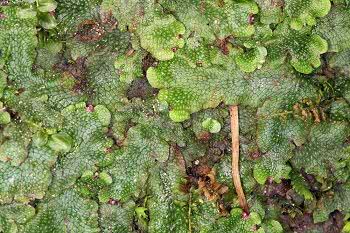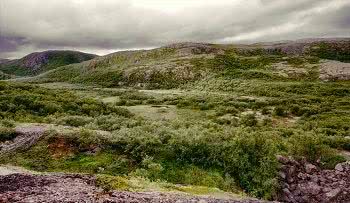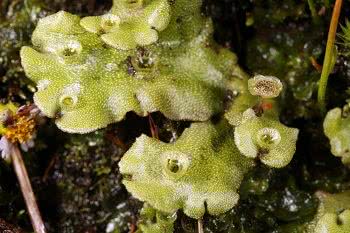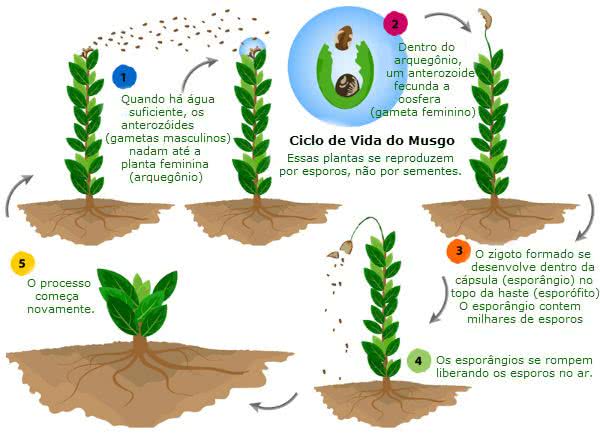The bryophytes are small avascular plants that generally live in moist environments, forming “green carpets” on rocks and tree trunks or in the ravines. The mosses and liver (see following figures: liver in detail above and forming a moss) are the most known plants this group, as well as ferns, have no seed .


Important Features
- They are avascular plants because they do not have sap- conducting tissues ( xylem and phloem ), the substances being distributed throughout the body from cell to cell;
- The main axis of the body is called the cauloid , with thin structures like blades, the phylloids , which resemble leaves. There are also structures that serve as fixation to the soil, the rhizoids that do not absorb substances from the soil as the roots;
- In bryophytes there is alternation of generations: there is a gametophytic phase (gamete form) that is haploid and more developed, and a sporophytic (spore form) that is diploid and shorter. Sporophytic grows on and depends on gametophytic;
- Reproduction can be asexual or sexual, most bryophytes are dioecious, that is, there are female and male plants, but there may be monoic species, that is, hermaphrodites.
- There needs to be water for reproduction to happen , which happens during a rain or when splashes of water fall on a stone;
- They preferably inhabit humid terrestrial environments , but there are species that withstand extreme temperature conditions: both high in plants exposed to the sun, and low temperatures in Arctic regions, forming the tundra;
- They are generally small, about 5 cm high, but some species can reach 40 cm.

Asexual and Sexual Reproduction
The asexual reproduction in bryophytes varies according to species, some are able to generate new individuals from parts of the body, or by fragmentation ; others produce propagules, specialized structures that form within the conceptacles, which are small cups. The propagules separate from the conceptacles and are carried by water to other places giving rise to a new being.

In sexual reproduction , the male reproductive structure is called anterid (it is shaped like a bag with cells that originate the anterozooid gametes and the female is archegonium (it is shaped like a long vessel, with a channel filled with liquid, and at the bottom is the gamete oosphere) .
Moss Life Cycle

Under conditions where there is water, the anterids open and release the anterozoids, which are taken to the ends of the female mosses and swim to the interior of the archegons, where they meet the oospheres. Fertilization takes place and a diploid zygote forms , which goes through several mitoses to multiply its cells and originate the embryo . The development of the embryo (diploid) continues, the sporophyte is formed at the end of the plants.


The sporophyte has a stem called an arrow and at the end a capsule, the sporangium . Within the sporangium are sporocytes (diploids), that is, the stem cells that divide by meiosis giving rise to haploid cells, the spores . As soon as the spores are ripe they will be released into the environment and blown into the air until they are able to germinate. After that they will originate a filamentous and branched structure, from which the new gametophytes will be formed and the cycle begins again.
